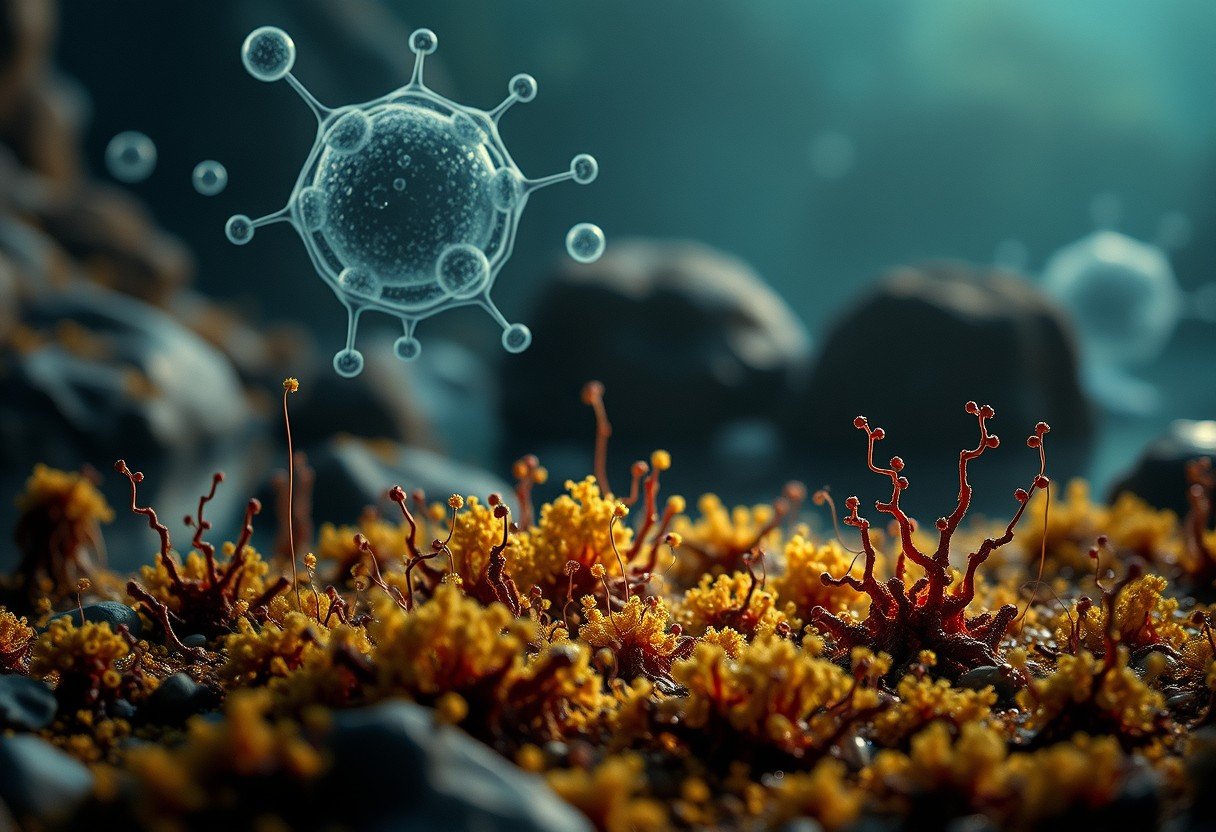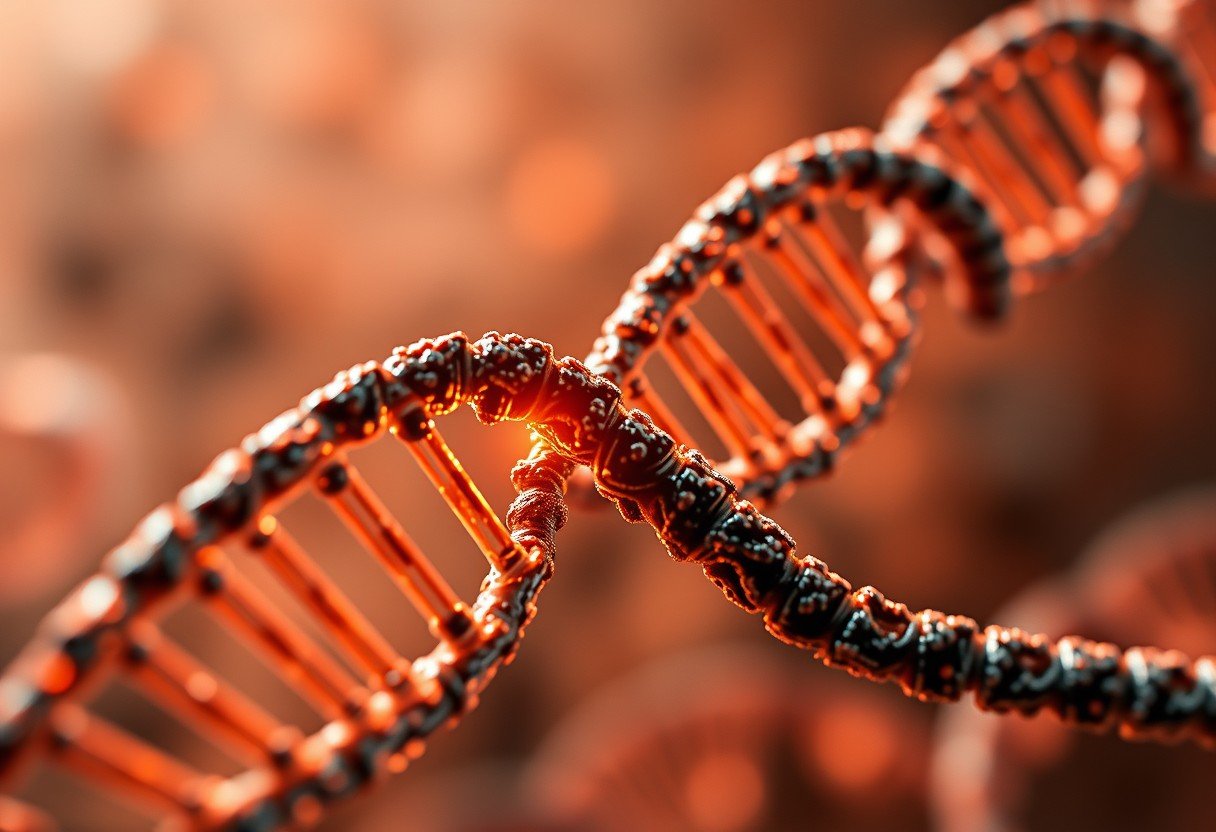Glycolysis is a simple energy pathway that runs in the cytoplasm of cells across life on Earth, from bacteria to humans. It likely began on an early anoxic planet and helped the first cells make ATP without oxygen. Here is how, where, when, and why this ancient pathway emerged, who uses it today, and how it connects to the evolution of metabolism.
Why Glycolysis Likely Came First
Glycolysis is found in bacteria, archaea, and eukaryotes, which strongly points to an origin before these lineages split. This universality is rare among pathways and marks it as a core feature of early life. It runs in the cytoplasm, so no membranes or organelles are required.
Its chemistry is straightforward. Ten steps convert glucose to pyruvate, netting 2 ATP and 2 NADH per glucose by substrate level phosphorylation. This makes energy without complex protein machines.
The steps can work with simple cofactors like ATP, ADP, NAD, and phosphate that are common in cells. Several reactions resemble plausible prebiotic chemistry seen in lab studies of sugars and phosphates.
Because it does not need oxygen, glycolysis fits the conditions of early Earth. Oceans and the atmosphere were mostly anoxic for billions of years before oxygen rose.
Clues From Early Earth Evidence
Geology records a long anoxic era. The Great Oxidation Event is dated to about 2.4 billion years ago, while signs of microbial life appear earlier than 3.4 billion years ago in ancient stromatolites.
- Stromatolite fossils older than 3.4 billion years point to microbial mats that lived before oxygen was common.
- Isotopic signatures of carbon and sulfur in Archean rocks suggest widespread anaerobic metabolism.
- Iron formations show that free oxygen was scarce for long periods in the early oceans.
Anaerobic fossils and geochemical markers align with a metabolism that did not depend on oxygen, which fits glycolysis and fermentation. Early cells likely tapped sugars and other small organics from their environment and from primitive biosynthesis.
These records do not name glycolysis directly, but they set the stage for a simple, oxygen independent ATP source to be favored and conserved.
Why This Pathway Fits Anaerobic Life
Glycolysis produces ATP without oxygen and supports fermentation to recycle NAD back to NAD+, keeping ATP flow going. Lactic acid and ethanol fermentation are classic routes in microbes and in human muscle under high effort.
- Fermentation end products like lactate or ethanol appear when oxygen is limited, confirming an ancient fallback for energy.
- Substrate level phosphorylation in glycolysis bypasses the need for respiratory chains.
- Running in the cytoplasm lets cells make ATP even if membranes or organelles are immature or damaged.
This independence from oxygen and complex structures gave early cells a reliable way to survive in harsh, changeable environments. It also made glycolysis a base that later pathways could build on.
When oxygen later became common, pyruvate from glycolysis fed into the citric acid cycle and the electron transport chain, linking old and new energy systems.
What Extremophiles Reveal About Ancient Metabolism
Extremophiles thrive in heat, acid, salt, or pressure, yet they use glycolysis or modified versions to make ATP. Some thermophiles grow near boiling water, and a few microbes tolerate temperatures near 121 degrees Celsius.
Acidophiles live at pH near 0 to 2, while halophiles grow in brines with salt levels higher than seawater. In all these places, glycolytic enzymes still function with changes that help stability.
Key enzymes such as hexokinase, phosphofructokinase, and glyceraldehyde 3 phosphate dehydrogenase are conserved in sequence and function across distant species. This conservation supports an ancient origin with later fine tuning.
Studying these organisms helps map which parts of glycolysis are most robust and which steps evolved alternative enzymes, giving clues to how early cells handled extreme conditions.
How Glycolysis Compares With Other Pathways
Comparing pathways shows why glycolysis was suitable for the first energy system. It works fast, has few parts, and starts directly from sugars. Other pathways are powerful but depend on more complex cell features.
Glycolysis is the only major ATP pathway that needs neither oxygen nor a membrane bound machine, and that simplicity matters for origins. The table below highlights core differences that shaped evolution.
| Feature | Glycolysis | Citric Acid Cycle | Electron Transport Chain | Fermentation |
|---|---|---|---|---|
| Main Location | Cytoplasm | Mitochondrial matrix or cytosol in some microbes | Inner mitochondrial membrane or plasma membrane | Cytoplasm |
| Oxygen Needed | No | Indirectly depends on oxygen in aerobic cells | Yes for aerobic respiration | No |
| ATP Yield Per Glucose | Net 2 ATP plus 2 NADH | About 2 GTP equivalents; more ATP comes via ETC | About 26 to 28 ATP from reoxidizing NADH and FADH2 | 2 ATP only |
| Universality | Across bacteria, archaea, eukaryotes | Widespread in aerobes | Widespread in aerobes | Common fallback in many cells |
These contrasts explain why glycolysis likely appeared first and why it stayed when oxygen rose. It connects to both anaerobic and aerobic paths and supplies key building blocks for biosynthesis.
Links To Modern Biology and Human Health
Modern cells still lean on glycolysis for quick ATP and for intermediates that build amino acids, lipids, and nucleotides. During hard exercise, muscle increases glycolysis and makes lactate to keep energy flowing.
Many tumors favor glycolysis even when oxygen is available, a pattern called the Warburg effect, and this is tracked clinically using FDG PET scans. The scan uses a glucose like tracer that lights up tissues with high glucose uptake.
Metabolic disorders also intersect with glycolysis. In diabetes, shifts in glucose transport and enzyme control change how fast glycolysis runs in different tissues.
Because this pathway is central, several drugs and nutrients influence it indirectly through insulin signaling, oxygen supply, and mitochondrial function.
Open Questions and Future Research Directions
Researchers are testing how prebiotic chemistry could feed into sugar formation and simple phosphorylation reactions that resemble early glycolysis. Mineral surfaces and cycles of wet and dry conditions are active areas of study.
Comparative genomics maps how glycolytic enzymes differ across lineages. Reconstructed ancestral enzymes help test whether early proteins were broader in function and more tolerant of heat or pH.
Synthetic biology now adapts glycolysis to make biofuels and organic acids, revealing which steps limit flow and how to boost yield in engineered microbes. These efforts also model how early cells might have balanced energy and biosynthesis.
Open problems include how the first catalysts formed, which small molecules primed energy transfer, and how membranes later integrated with an already working glycolytic core.
FAQ
Why is glycolysis considered one of the first metabolic pathways?
It is universal across bacteria, archaea, and eukaryotes, runs in the cytoplasm, and does not need oxygen. These traits match the anoxic conditions of early Earth and point to an ancient origin.
What does glycolysis produce in simple terms?
From one glucose, it nets 2 ATP and 2 NADH and makes 2 pyruvate molecules. The pyruvate can go to fermentation without oxygen or to the citric acid cycle when oxygen is available.
How does early Earth evidence support an anaerobic origin?
Stromatolites older than 3.4 billion years and geochemical data show life thrived before oxygen was common. The Great Oxidation Event at about 2.4 billion years marks a later shift to aerobic pathways.
Why do extremophiles matter to the story of glycolysis?
They keep glycolysis running in heat, acid, or salt, showing the pathway is robust and adaptable. Conserved enzymes across distant species support a very old common core.
How is glycolysis linked to human disease and health?
Tumors often show the Warburg effect, with high glycolysis even with oxygen, which clinicians image using FDG PET. Changes in glycolysis also appear in diabetes, exercise metabolism, and some inherited enzyme defects.









Leave a Comment